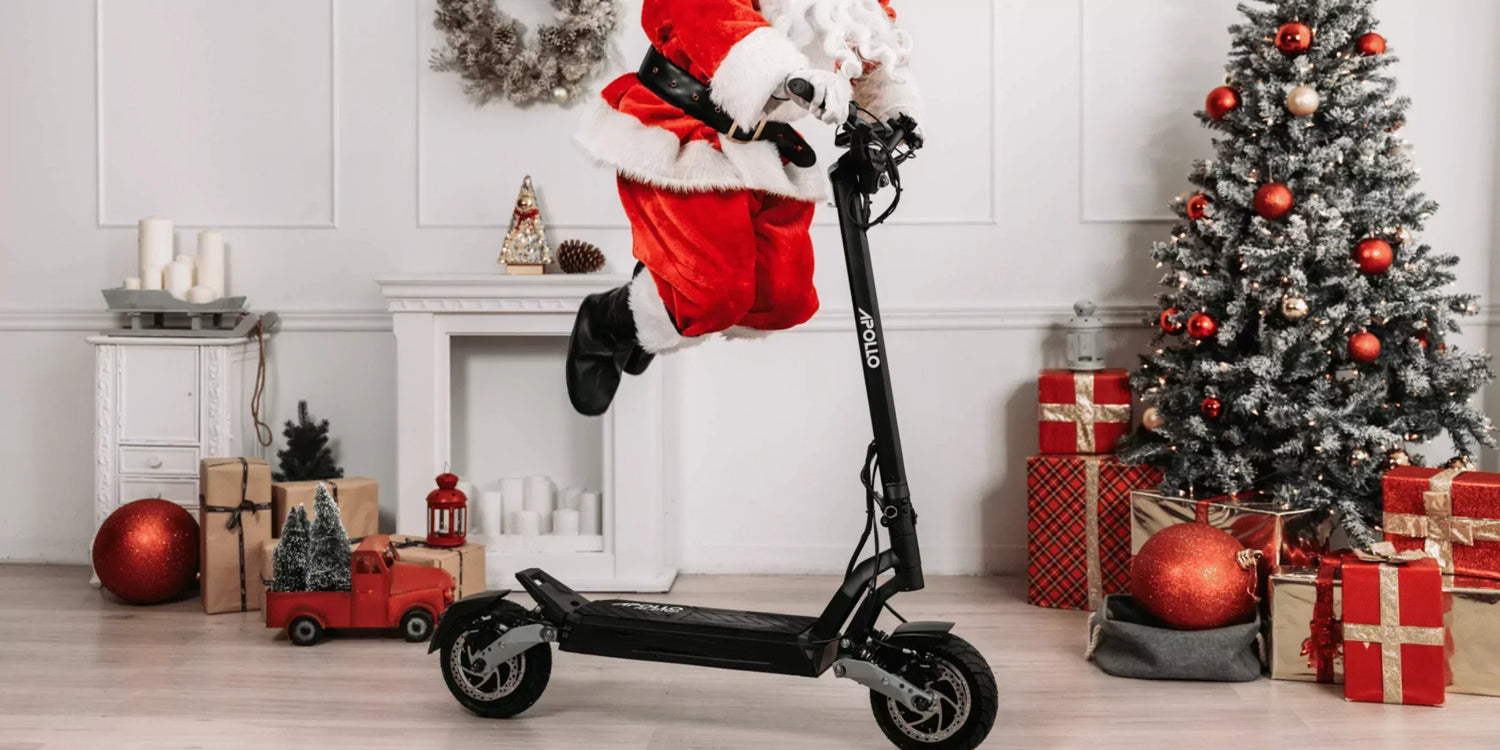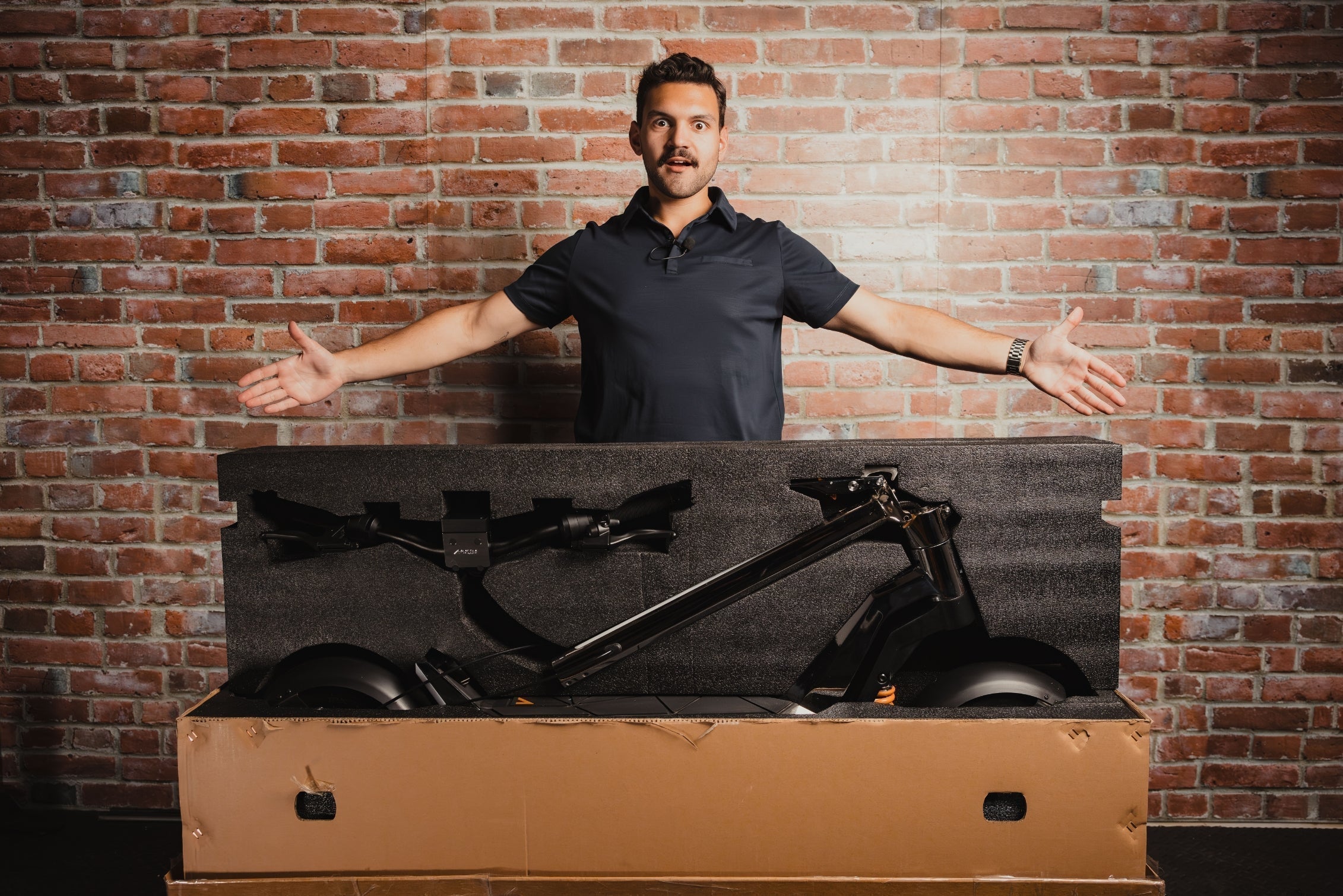Can You Really Ride an Electric Scooter in Winter? Let’s Talk About It.
This is one of the most common questions we get from riders in colder climates. If you live in places like Texas or Miami—no problem, ride on. But what if you're dealing with real winter—freezing temperatures, icy streets, maybe even snow?
Technically, yes you can ride your electric scooter in winter. But should you? That depends on a few important factors: your scooter’s capabilities, the road and weather conditions, and how well-prepared you are. Below, we cover everything you need to know before heading out for a cold-weather ride.
Is Winter Scootering Really Possible?
Yes, winter scooter riding is possible but it’s not one-size-fits-all. If you're riding a high-quality model with good water resistance, proper tires, and you're geared up for the cold, it can actually be enjoyable. But winter also brings new risks, and not all scooters, or riders, are built for it. The key is preparation.
How Cold Weather Affects Your Electric Scooter’s Performance
Winter brings challenges, not just for you, but for your scooter too. Cold weather impacts everything from your battery life to your traction, and if you're not careful, you could end up damaging components over time.
Here’s what to watch out for:
Battery Life:
Your electric scooter uses lithium-ion batteries, which don’t love the cold. When temperatures dip, the chemical reactions that power your battery slow down. That means faster battery drain and shorter range. If it’s close to or below freezing (0°C / 32°F), it could even lead to long-term battery degradation.
Tire Pressure and Traction:
Cold temperatures cause tire pressure to drop, which reduces grip. Combine that with wet or icy surfaces, and you’re looking at longer stopping distances and reduced control. Always check your tire pressure before winter rides and avoid riding if conditions are too slick. Depending on your scooter model, you could change your tires for winter tires - we highly recommend that you do this - but bear in mind that this does not mean you don’t need to be cautious anymore.
Electrical Components:
Your scooter is full of electrical components like wires, sensors, circuits that can be affected by freezing temperatures if not properly insulated. Sudden drops in temperature can cause malfunctions if the scooter isn’t designed to withstand it. (Apollo scooters are pretty tough, but even we recommend caution.)
Your Body's Reaction Time:
You might be bundled up in layers, but your fingers and face are still exposed, and that matters. Cold hands can seriously impact your reaction time, especially when it comes to braking or accelerating. That’s why winter safety gear is just as essential as making sure your scooter is winter-ready.
Start with insulated gloves or even handlebar mitts because they’ll help maintain a firm grip while keeping your hands protected from the cold. Cover your face with a balaclava or thermal face mask, and invest in a warm, windproof jacket that keeps you cozy without restricting your movement.
And don’t overlook visibility—winter riding means shorter days and lower light. Make sure you're wearing reflective gear and that your scooter is equipped with bright front and rear lights to help you stay seen and safe on the road.
Important Tip: Store It Smart
Even if you love winter riding, your scooter deserves a break when not in use. Always store it indoors in a dry, room-temperature environment. Leaving it outside in freezing conditions can lead to battery damage, rust, or moisture-related issues that shorten your scooter’s lifespan.
Waterproof or Just Water-Resistant? Can I ride in the snow?
Let’s get one thing straight—riding your electric scooter in the snow isn’t exactly a winter wonderland experience. If you’ve ever tried riding a bike in the snow (without fat tires), you know how slippery and frustrating it can be. The same applies to scooters, only now you're dealing with electrical components, too.
So, can you ride in the snow? Technically, it depends on your scooter’s IP rating (Ingress Protection rating), which tells you how well it can handle dust and moisture:
-
IP54 or higher: You’re generally safe to ride through light snow or slushy conditions, but caution is still required.
-
Below IP54: It’s best to leave your scooter parked indoors when it’s wet or icy outside.
Keep in mind that water-resistant ≠ waterproof. Snow, slush, and especially road salt can wreak havoc on your scooter’s electrical components and battery. And here’s a critical reminder: water damage is not typically covered by warranty. So before you brave the elements, double-check your warranty coverage—or accept the risk that any damage might be out of pocket.
Curious about IP ratings and what they mean? Check out this blog post
Best Practices for Using an Electric Scooter in Winter
If you’ve braved the cold, tackled the slippery streets, and made it back in one piece—nice work! But before you kick back with a hot chocolate, there are a few winter maintenance musts to take care of. Riding in winter is only half the battle—keeping your electric scooter in top shape afterward is just as important.
1. Keep It Clean (Every Time)
Snow, salt, slush, and grime are a nasty combo for your scooter, especially its electrical components. After every ride, wipe down your scooter thoroughly, paying close attention to joints, ports, and any exposed parts. Salt in particular can cause corrosion, which leads to malfunctions, short circuits, or worse.
2. Warm It Up Indoors
Whenever possible, start your ride with a warm battery. Cold batteries don’t perform as well, and pre-warming can help preserve range and responsiveness. After your ride, store your scooter somewhere dry and at room temperature and avoid leaving it in the cold, even overnight.
3. Charge at Room Temperature Only
This one’s critical: never charge your scooter when it’s cold. Plugging in a frozen or cold lithium-ion battery can cause permanent damage. Let it return to room temperature first, then charge as usual.
4. Use Fenders (Please!)
They may not be glamorous, but fenders are your best friend in slushy weather. They help keep snow, slush, and grime from spraying up onto your scooter—or you. While they won’t block everything, they do go a long way in protecting sensitive parts and keeping your ride a little cleaner.
Check out this video for the full tips.
When to Leave It at Home: Situations to Avoid Riding
Even experienced riders should avoid:
-
Heavy snowfall or blizzards
-
Black ice or untreated icy paths
-
Wind chills below -15°C/5°F
-
Unlit or unmaintained trails
When in doubt, prioritize safety. Winter riding isn’t worth the risk in extreme weather conditions.
Final Verdict: Is Winter Riding Worth It?
Riding an electric scooter in winter is absolutely possible—and can even be fun—as long as you're properly prepared. From battery management to weather-appropriate safety gear, winter riding just requires a bit more attention and planning.
With the right scooter, a solid understanding of your local weather conditions, and a dose of common sense, it can be a smart and efficient way to beat traffic and stay mobile during the colder months.
But here's the catch: once temperatures dip below freezing, we don’t recommend it. The risks, ranging from battery damage to slippery roads, start to outweigh the benefits. So if the thermometer is plunging, it’s probably best to leave your scooter at home and wait for better weather.
Bottom line? If it’s cold but dry, ride smart and ride safe. If it’s freezing or icy, skip the ride, protect your scooter, and live to ride another day.
Key Takeaways of Winter Riding:
-
Winter itself isn’t the issue—it’s the cold, moisture, and salt. If you're in a warmer climate, you're in the clear. But if snow, slush, or road salt are involved, take extra precautions.
Cold weather reduces battery life and affects overall performance. Lithium-ion batteries don’t love the cold, so avoid riding in freezing temperatures and expect a shorter range. -
Skip dangerous conditions. Black ice, heavy snow, and blizzards? That’s a hard no. Even the best electric scooter isn’t built for Arctic exploration.
-
Dress for the ride. Wind chill makes it feel colder than it is, especially at high speeds. Gloves, a windproof jacket, and reflective clothing can make a big difference in comfort and safety.
-
Know your scooter’s limits. Check the IP rating (water resistance) and review your warranty before venturing into winter weather. Not all scooters are made for wet or icy conditions.
-
Clean it up after every ride. Salt and grime can corrode electrical components—rinse or wipe down your scooter thoroughly to protect its lifespan.
-
Always store and charge indoors. Cold batteries + cold chargers = long-term damage. Keep your scooter warm and dry when not in use, and charge it at room temperature only.
Stay safe, ride smart, and enjoy your electric scooter in winter!






